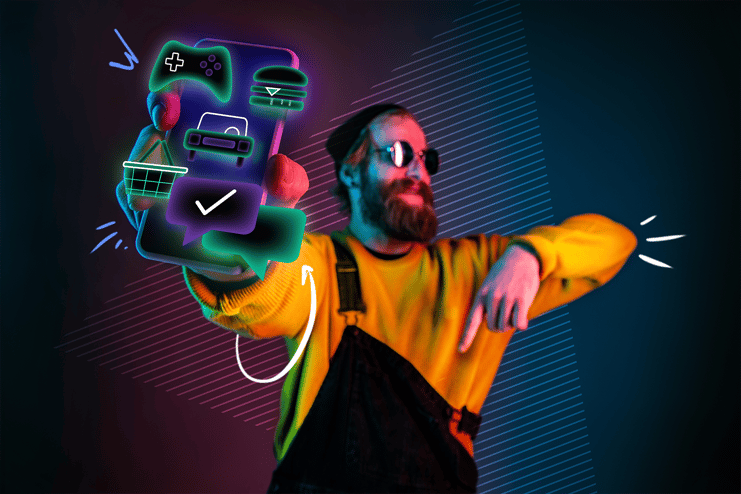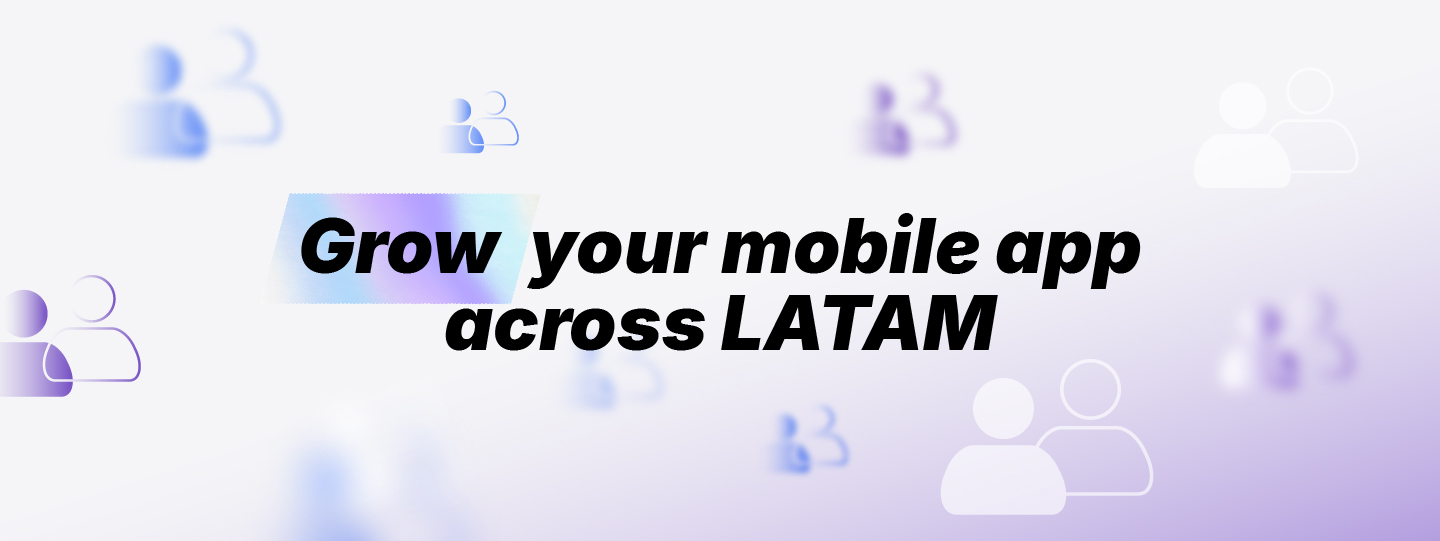
Paid Retargeting is a strategy where brands and apps create campaigns for people who have already downloaded or interacted with the apps on their cell phones. They are based on tracking users while they browse to identify those who have shown interest in a specific product or service and show them personalized ads to encourage conversion or retention.
The retargeting process begins with a tracking code inserted into the app. This code allows information about visitors to be recorded, including which apps they visited, how long they stayed, and what actions they took (such as adding a product to the shopping cart or completing a contact form).
Based on the information recorded by the tracking code, retargeting ads are then shown to users who have previously interacted with the app. These ads often appear in other applications that the user uses, such as banners, social media ads, search ads, or video ads.
The main advantage of retargeting ads is that they allow you to target users who have already shown interest in an app, increasing conversion chances. They also allow ads to be customized for each user based on their interests and online behavior, further increasing the effectiveness of advertising.
Retargeting is used to activate new users, convert them into subscriptions or purchases, prevent churn, offer incentives and offers to "heavy users," and recover users who have left the app.
To start a Retargeting campaign, it is necessary to work with a DSP (demand-side platform). The DSP is connected with ad Exchanges and SSPs (e.g., Applovin, Unity, Ironsource, Google, etc.).
DSPs use AI and machine learning to guide advertisers to the best place for their ads at the best price (using RTB). At the same time, in a retargeting campaign, these ads are directed to the people for whom we have the device ID so that they return to the app, unlike a user acquisition campaign where the ads are directed to the people most likely to click and convert.
The apps use push notifications, email marketing, SMS, Whatsapp, etc. for their campaigns, but they cannot address all users. SMS is a marketing channel that is usually cheap but very intrusive for the user. It is best used for activation and retention in the first few days of a new user, but very infrequently.
The advantage of retargeting is that it seems less intrusive. We can address more than 70% of users, including those who turn off notifications. This is a great advantage for any app that wants to recover users.
If you have an app where you have transactions such as orders, purchases or subscriptions and
If the frequency of your app transactions can be made every day or every week, retargeting can greatly help. If your app transactions are only once a year, this strategy is not the best for you (for example, an app to buy a car, a house, etc.).
To achieve a greater impact in Retargeting campaigns, the creatives must differ from those used in UA (top formats: MRAID, Video, and Native).
The text “Less is more” should be reflected in the target user stage within the app. You can also add something to create urgency to return to the app (time limit, expiration date, limited-time offer).
Image: simple, bright, colorful with a call to action.
Adds-on: Clear CTA, related to the stage of the target user, adding a discount, and speaking directly to the user is recommended. (example: reorder with a 10% discount in the next 24 hours)
Product feed and Dynamic creatives: Speak to existing user segments with dynamic ads based on past behavior, driving them to engage with the purchase.
Creative: each DSP will dynamically customize the display and native creatives for each user in real-time (corresponding to the stage of the app where the user is located).
Here are some examples of retargeting ads so you can better understand how they work and how they can benefit your app:
Amazon
Amazon is one of the biggest examples of a company using retargeting effectively. If you have browsed their app and added products to your shopping cart but have not completed the purchase, it is very likely that you will come across Amazon retargeting ads on other sites you visit. These ads will show the products left in your shopping cart to remind you what you missed and take you back to the app to complete the purchase.
Spotify
Spotify uses retargeting to promote its premium service to users with a free account. If you've been using Spotify for free for a while, you might come across retargeting ads that offer you a free trial of their premium service. These ads may appear on your Facebook account, in Google search results, or in other apps you visit.
Airbnb
Airbnb uses retargeting to reach users who have browsed their app but have not booked a property. If you've been searching for accommodation on Airbnb, you may come across retargeting ads that remind you of properties you've viewed and offer a discount to complete the booking.
booking
Booking.com uses retargeting to promote properties you've viewed on their app, as well as to offer you similar properties that might be of interest to you. If you've been looking for accommodation on Booking.com, you may see retargeting ads that show you the properties you've viewed and other options that might interest you.
Nike
Nike uses retargeting to promote products you've viewed in its app, as well as to provide you with recommendations for similar products that may be of interest to you. If you've been browsing the shoes section of the Nike app, you may see retargeting ads that show you the shoes you've viewed and other options that might interest you.
Here we can see an example of a retargeting ad versus a User Acquisition ad. While UA focuses on downloading the app for the first time, the retargeting ad focuses on a promo that tries to recapture users who already know the product.

Brand awareness is the reason 70% of marketers opt for retargeting. 17.5% of apps running retargeting see a 25% conversion rate. Retargeting outperforms all other ad placement strategies with a 1046% efficiency rate.
Retargeting data tells us that there are four main types of retargeting, and almost all of them are used by agencies and brands alike. App retargeting is the most used. Search retargeting ranks second, applied by 64.9% of marketers; email retargeting ranks third at 26.1%, and creative retargeting is used by 29.8%.
Combining retargeting with other advertising channels is a winning combination. Google retargeting trends show that this strategy is better when used in conjunction with other techniques. Using retargeting with other advertising tools increases the chance of a sale by 50%. This is how the most integrated digital marketing campaigns can double success rates.
Retargeting is being used in e-commerce in 27% of cases.
At 27%, eCommerce retailers top the list of industries using this strategy the most, according to Ecommerce Retargeting Statistics. It is followed by the media sector with 17%, technology, while healthcare is third with 10%, and finance is fourth with 9%.
Retargeting also reduces cart abandonment by 6.5%. The average worldwide cart abandonment rate by device is 77.24%, indicating that while online shopping has never been easier, marketers are doing something wrong. Mobile retargeting is used by 27% in the retail industry to reduce that number. The good news is that mobile retargeting statistics indicate that this method not only reduces shopping cart abandonment but also increases online sales by 20%.
.png)
Published Dec, 23, 2025
